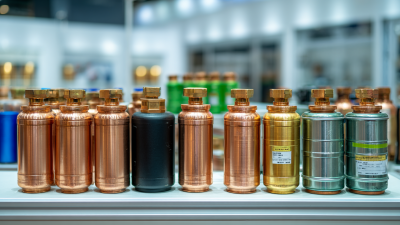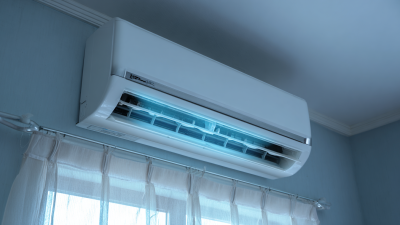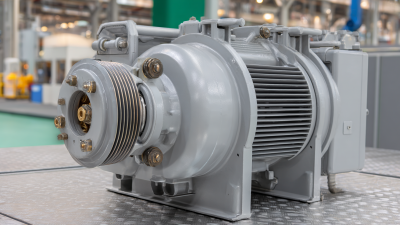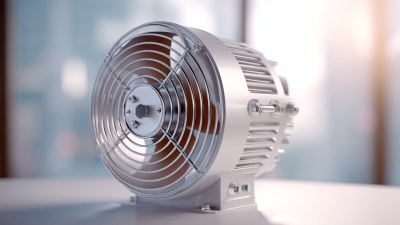




In today's rapidly evolving HVAC industry, the quest for efficient and reliable components is more crucial than ever. One such essential component is the Liquid Line Filter Drier, which plays a vital role in maintaining the purity and efficiency of refrigerant in cooling systems. However, as technology advances, so does the need for innovative solutions that can improve performance and extend service life. This blog will explore alternative types of Liquid Line Filter Driers, focusing on their unique features, benefits, and applications. We will delve into the latest advancements in filter media, desiccant materials, and construction techniques that offer enhanced filtration capabilities, ensuring optimal functionality in diverse environments. By examining these alternatives, we aim to provide HVAC professionals with valuable insights that can help them make informed decisions for their systems, ultimately driving efficiency and reliability in their operations.

Emerging technologies in liquid line filter drier design are revolutionizing the way these essential components enhance HVAC and refrigeration systems. Traditional filter driers primarily focus on moisture absorption and filtration, but recent advancements have introduced multifunctional designs that significantly boost performance and efficiency. Innovative materials, including advanced sorbents and nanotechnology, are now integrated into these devices, allowing for greater moisture retention and particulate filtration while reducing the overall size and weight of the units.
Furthermore, the incorporation of smart technology is transforming filter drier applications. By utilizing sensors and IoT connectivity, these devices can monitor system conditions in real-time, providing valuable data on moisture levels and filter status. This proactive approach enables maintenance teams to address potential issues before they escalate, ensuring optimal system performance and longevity. As the industry moves toward more sustainable practices, such innovations in liquid line filter drier design are paving the way for cleaner, more efficient refrigeration systems that meet the demands of modern applications.
This chart illustrates the efficiency ratings of different filter driers designed using emerging technologies. The data represents the performance metrics derived from various liquid line filter drier applications.
Traditional liquid line filter drier applications face several key challenges that can significantly impact system performance and efficiency. One of the primary issues is the susceptibility to clogging due to moisture and contaminants. According to a report by the International Institute of Refrigeration (IIR), nearly 30% of HVAC system failures are linked to inadequate filtration, emphasizing the critical need for advanced filtration solutions. When contaminants accumulate in filter driers, they can lead to increased pressure drops, which reduce chilling efficiency and elevate operational costs.
Another challenge is the limited capacity of conventional filter driers to handle fluctuations in refrigerant flow. The Air Conditioning, Heating, and Refrigeration Institute (AHRI) highlights that systems designed with traditional filter driers can experience up to a 20% decrease in efficiency during peak loads. This inefficiency not only affects the system's cooling performance but can also lead to higher energy consumption, further straining resources. As the demand for more energy-efficient solutions grows, the industry is turning towards innovative filter drier technologies that offer enhanced moisture removal and better adaptability to variable operational conditions, ensuring optimal performance in diverse applications.

In the quest for improved efficiency and sustainability, the use of innovative materials in liquid line filter driers is becoming increasingly important. Traditional materials, while adequate for basic filtration, often fail to meet the demands of modern applications where environmental impact and performance are both critical. The introduction of sustainable materials not only enhances the operational effectiveness of filter driers but also aligns with the growing industry movement towards environmentally responsible solutions.
Many companies are now exploring biodegradable or recyclable materials in their products. For instance, advanced polymers and composites designed for durability and efficiency not only reduce waste but can also offer superior filtration properties. These sustainable alternatives can enhance the overall performance of filter driers, ensuring better moisture control and extending system life. As manufacturers shift their focus to these innovative solutions, they contribute to a more sustainable future while progressively improving the performance metrics that matter most in the HVAC and refrigeration industries.
In the context of liquid line filter drier applications, the integration of smart monitoring solutions is crucial for enhancing the efficiency of drying operations. The implementation of IoT-enabled solar dryers, as observed in recent agricultural innovations, exemplifies how technology can optimize the drying process for agricultural products. These smart solutions not only utilize renewable energy but also ensure that the drying parameters are continually monitored and adjusted in real-time, leading to improved product quality and reduced waste.
Moreover, advancements in hybrid drying systems that combine solar energy with liquid aids address the common shortcomings of traditional drying methods. By leveraging intelligent air circulation, these systems enhance moisture removal and energy efficiency, which is vital for addressing the food demand challenges in regions like Indonesia. The adoption of such innovative drying solutions can lead to significant improvements in supply chain management, ultimately ensuring a more sustainable approach to agricultural production and food availability.
| Application | Monitoring Solution | Efficiency Improvement (%) | Common Issues Addressed | Installation Time (hours) |
|---|---|---|---|---|
| Residential HVAC Systems | Real-time Pressure Sensors | 25% | Clogged filters, Refrigerant leaks | 2 |
| Commercial Refrigeration | Smart Temperature Monitoring | 30% | Temperature fluctuations, Moisture accumulation | 3 |
| Food Processing Chillers | IoT-based Data Logging | 28% | Contaminated driers, Inefficient operation | 2.5 |
| Industrial Air Conditioning | Automated Leak Detection | 35% | Refrigerant loss, System inefficiency | 4 |
| HVAC Retrofit Applications | Integrated Control Systems | 20% | Outdated technology, Energy waste | 3.5 |
The innovations in liquid line filter drier applications are experiencing a significant shift, driven by emerging technologies and a focus on sustainability. Future trends suggest a growing integration of advanced materials and smart technologies that can enhance filter efficiency and lifespan. With the increasing demand for energy-efficient cooling systems, companies are exploring eco-friendly refrigerants and developing filters that cater to both performance and regulatory requirements.
Incorporating nanotechnology into filter drier designs could be a game-changer, allowing for superior filtration properties and greater resistance to contamination. Similar to advancements seen in food packaging, where nanoparticles are utilized to improve durability and functionality, the filter drier industry can harness these technologies to create more effective solutions.









